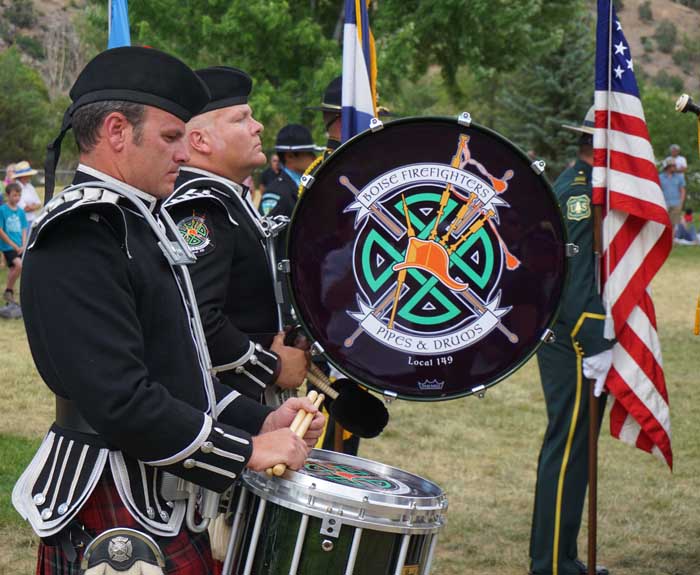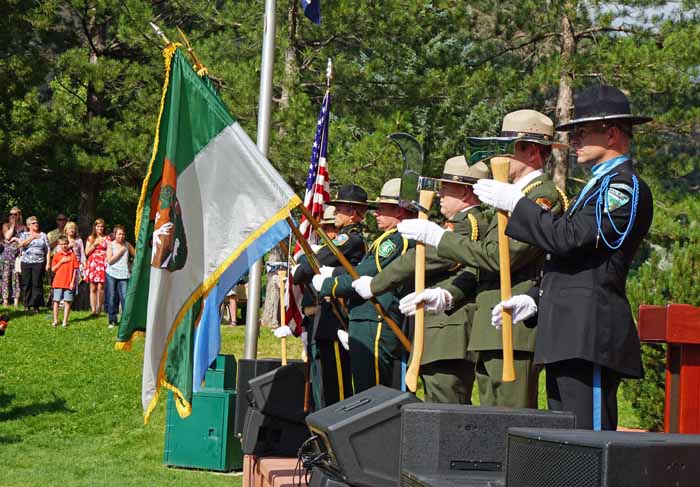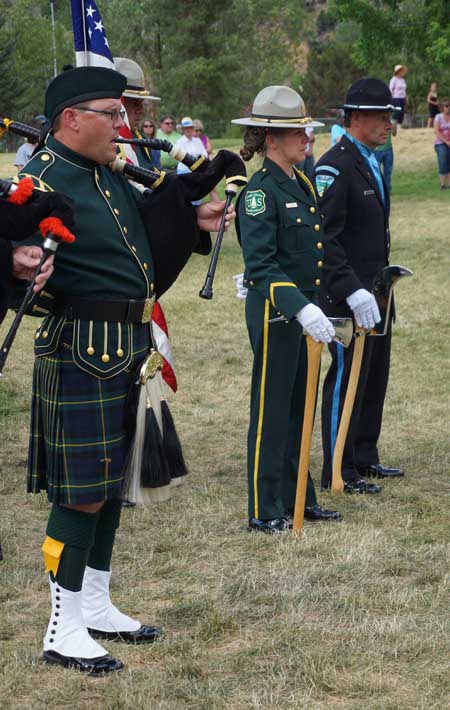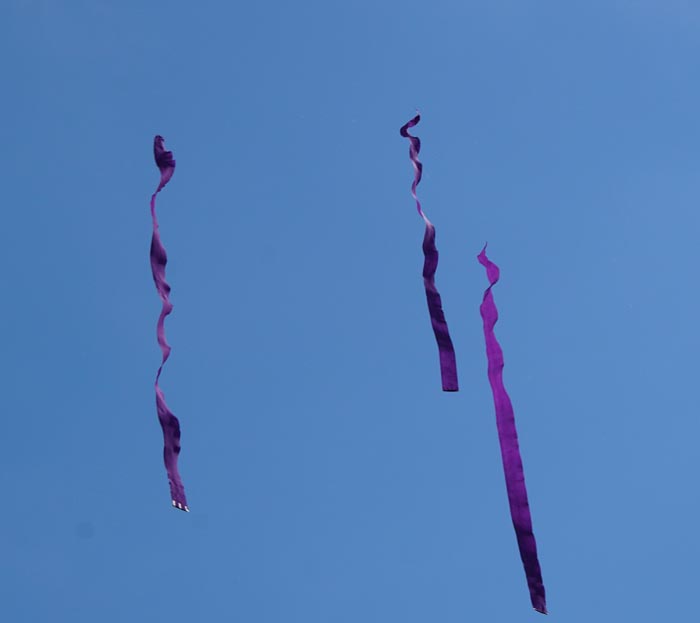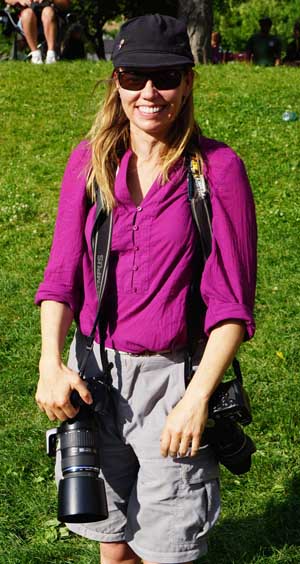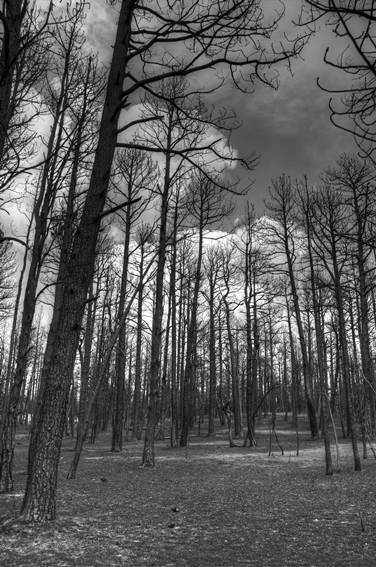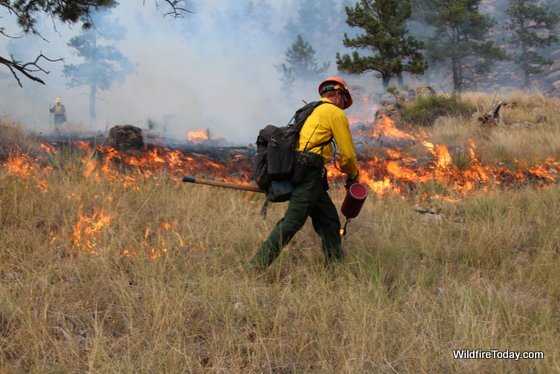
Since October of 2013 we have been writing about what we call the Holy Grail of Firefighter Safety — a system that could track firefighters AND the location of the fire in real time. We envision that the data could be monitored by a Safety Officer, Operations Section Chief, or Division Supervisor to ensure that firefighters are safe relative to the location of the fire. It is our position that in the last 9 years the lives of 24 firefighters could have been saved by a system like this. On the 2006 Esperanza Fire and the 2013 Yarnell Hill Fire, the supervisors of the firefighters that were killed thought their personnel were in a different location than where they met their demise. If we go back further, for example to the 2005 Cramer Fire and others over the last couple of decades, we could probably add to the list.
In an effort to find out what, if anything, the federal land management agencies are doing to increase firefighters’ situational awareness by knowing the real time location of firefighters and the fire, we contacted the U.S. Forest Service and gave them a list of questions. Our request bounced around and eventually we received a reply from Mike Ferris of the National Incident Management Organization in Portland.The short answer is — they have started a two-year study to look at the issue. So far the study is funded for one year, but no timeline or target implementation date has been established.
Considering the 12 federal air tanker studies completed over an 18-year period before anything substantial was done to address the aging aircraft issue, we hope this two-year study is not simply the first of many that will be placed on a shelf and ignored before something is done to improve the situational awareness of our firefighters. Analysis Paralysis can be fatal. With no timeline to shoot for yet, it sounds like it could suffer the same fate as the 12 air tanker studies.
We thank Mr. Ferris for responding to our request. His answers are below, along with our questions, in bold.
*****
1. Is the USFS doing anything to develop a system to track the real time location, on a regular basis, of firefighters AND the fire they are assigned to?
At the present time there is no technology in use that enables real-time tracking of ground resources assigned to wildland fires. There is also no standard for such tracking or the technology that would support it that has been accepted on an interagency basis. The U.S. Forest Service continues to review and assess the advances in technology associated with GPS devices. There are GPS devices which show position of the unit as well as devices which transmit that position to a receiver. Wildland fire forces are challenged in the terrain they deal with, the large numbers of federal, state, local, and private cooperators who take action on our fires, and the appropriate use of new technology and data. The Forest Service continues to assess the use of technology used in such places as Department of Defense and weigh the utility and benefit of these technologies. Considering the nearly 10,000 fires per year the Forest Service responds to, over the nearly 200 million acres we protect, in 44 states, our focus is developing decision support which will enable us to take effective, efficient action on those fires and care for the safety of firefighters and civilians.
The Fire and Aviation Management Technology & Development Steering Committee rank the need for a Situational Awareness System for ground forces a priority project. The objectives are:
- Define business and technical requirements for a situational awareness system for ground forces. This includes the tracking of personnel.
- Measure current performance as a baseline for evaluation.
- Evaluate existing technologies against the requirements.
- Develop an implementation plan for an interagency application.
This project builds on the previous work conducted by the Technology & Development program on assessing the state of the technology and evaluating commercial-off-the shelf products.
2. If so, what exactly?
The Forest Service’s Technology and Development Program (T&D) has been evaluating Satellite Emergency Notification Devices (SEND) since 2008. The Missoula T&D Center led the evaluation of SPOT and DeLorme® InReach® devices with the objective of evaluating the performance of these devices in areas where two way radio and cellular transmission are unavailable. Recently, the Forest Service purchased 6,000 SPOT units for field use, not related to wildland fire activities. The T&D Program and Chief Information Office continue to evaluate the use of SEND devices including functions within wildland fire operations.
Other initiatives have been sponsored by the Department of Homeland Security, Science and Technology Directorate, First Responder Resource Group where tracking systems have been used or tested on fires. The Next-Generation Incident Command System (NICS) was developed through collaboration with Massachusetts Institute of Technology (MIT) Lincoln Labs and CAL FIRE. NICS has been used operationally on wildfires in California. The University of California, San Diego Supercomputer Center currently is hosting NICS (https://nics.ll.mit.edu/sadisplay/login.seam). NICS is open-source, web-based and non-proprietary. Since it is web-based, access to the internet via Wi-Fi or cellular signal is required.
The Jet Propulsion Laboratory and the Forest Service’s T&D Program cooperated on the Personal Alert and Tracking System. This is a two-dimensional tracking system that uses a persistent, self-healing mesh network. This system was tested on two prescribed fires; however, it is not commercially available.
While many of these technologies have potential, more detailed analysis needs to be conducted before any large scale deployment can occur. It is important to describe the other considerations that must be resolved prior to determining a potential solution. Implementing technologies in incident management in the wildland fire environment is very complex and poses a number of operational, integration, distribution and infrastructure issues that need to be resolved before they can be implemented on a national, integrated, interagency scale.
Prior to implementation of any of the solutions, the following must be determined. These issues include:
- Determining whether firefighters should be tracked all the time or whether simply knowing the location of a fire fighter in distress is what is needed.
- Determining what types of incidents resources should be tracked on, i.e. initial attack, extended attack, Type 1 or Type 2 incidents, etc.
- Determining what types of resources to track, i.e. agency personnel, contractors, cooperators, etc. and what level to track them at, i.e. crew, individual firefighter, etc.
- Determining how to distribute tracking devices to firefighters, i.e. at their home units, on incidents, etc.
- Determining who will be responsible for tracking resources, i.e. dispatch, incident personnel, etc.
- Difficulties with receiving satellite or cell phone signals in remote, mountainous areas.
- Define the frequency of automatic reporting from the device
- Potential distractions of tracking devices to firefighters (“Christmas tree effect”).
3. Who is involved in the development?
The National Technology & Development Center will be the lead for this project. Since the objective is to provide an interagency solution, an interagency complement of subject matter experts will be assembled. After defining the business need and technical requirements, a request for information (RFI) will be published in the Commerce Business Daily (CBD) to solicit information from the commercial sector.
4. Is the development adequately funded? What is the amount of the funding?
Funding is part of the regular appropriations for the technical program of work identified for that year. The estimated duration for the project is two years. The estimated budget is $290K. This budget has been requested, however, since funds are appropriated for a one year period, the request for funding has to be done every year. Within the estimated two-year period, a recommendation will be given to senior fire leadership.
5. What is the stage of development?
Preliminary development, testing, and evaluation have been completed to give an initial assessment on the state of the technology. Since the technology associated with this project changes rapidly, a RFI will be published.
6. When will it be implemented?
No current timeline has been established. Once the advantages and disadvantages have been completely assessed, then recommendations will be forwarded to senior fire leadership for their deliberation and decision.
7. What will be the cost?
Funding needs will be determined once a comprehensive review has been completed and a complete understanding of the operational, integration, distribution and infrastructure issues are identified and understood.
8. Specifically, how will firefighters be tracked? Using a currently available consumer-grade personal locator device that is available now off the shelf? Or will the hardware be incorporated into radios carried by firefighters?
It is still too early to determine just what product or products will give firefighters and fire managers the best options for firefighter safety.
9. Specifically, how will the real time location of the fire be determined? How will it be made available to firefighters?
This is part of the project. The project takes a longer view and takes a look at what type of tracking is needed.
10. Are the federal land management agencies interested in what is being used now in southern California called the “Next Generation Incident Command System”, which will do much of the above? If not, why not?
The Next Generation Incident Command System was developed by MIT Lincoln Labs with CAL FIRE as the primary wildland fire agency associated with the development. The Forest Service, in conjunction with the NWCG Equipment Technology Committee, is currently collaborating with CAL FIRE and NICS to assess the emerging technology and keeping abreast of developments.
11. Are the federal land management agencies interested in a system developed by DARPA that does all of the above and much more, called “Fireline Advanced Situational Awareness Handheld (FLASH)”. If not, why not?
The Forest Service attended the demonstration in Prescott, Ariz. of the FLASH system. All viable technologies will be considered. Technology providers are encouraged to respond to the RFI after the business needs and technical requirements are defined.




